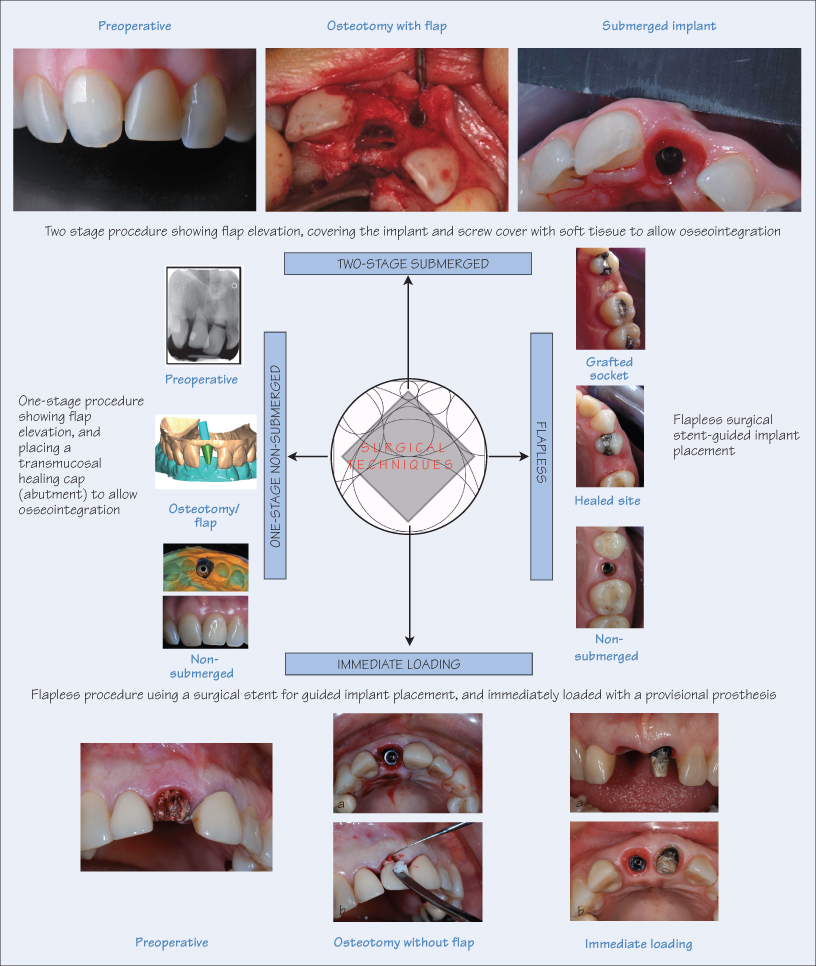52
Implants: Surgical Techniques

Surgical techniques have evolved considerably since the Brånemark protocol of distinct surgical and prosthetic phases for the delayed approach for implant rehabilitation. Currently, most surgical approaches are guided by a prefabricated surgical stent, with or without prior CBCT assessment. The surgical stage involves a flap or flapless preparation of an osteotomy. The implant is then screwed or tapped into the prepared site to ideally terminal at a supracrestal level, and the implant is either submerged by covering with soft tissue, non-submerged with a transmucosal healing abutment, or immediately restored with a provisional restoration.
Flap Design
The basic requirement of a flap is that it should be conservative, while allowing adequate access to determine morphology, size and trajectory of the alveolar bone ridge. Several designs are advocated depending on clinical manifestations and include:
- Full thickness mucoperiosteal buccal, lingual or crestal incision flaps, with or without vertical releasing incisions, avoiding interproximal papillae if adjacent teeth are present. These flaps are ideal for gaining access, simultaneous bone grafting and osseous contouring;
- Mini-flaps are restricted to the area of implantation, e.g. a small buccal flap for single tooth replacement or a palatal peninsular flap for avoiding buccal incisions and the ensuing scarring in aesthetically sensitive maxillary anterior regions;
- Tissue punch – for exposing underlying bone for ‘flapless’ surgery. This method is ideal for broad flat ridges, with adequate attached gingiva, not requiring osseous contouring or hard or soft tissue augmentation at the time of implant insertion.
Flapless Design
The flapless method is the least invasive surgical protocol, but is essentially a blind surgical procedure. The prerequisites for a flapless procedure are adequate volume of bone and attached gingiva. A surgical stent accurately guides the implant to the pre-designated position without needing to raise a flap. The fixture head is non-submerged and a transmucosal healing cap is placed to sculpt the soft tissue and all/>
Stay updated, free dental videos. Join our Telegram channel

VIDEdental - Online dental courses


